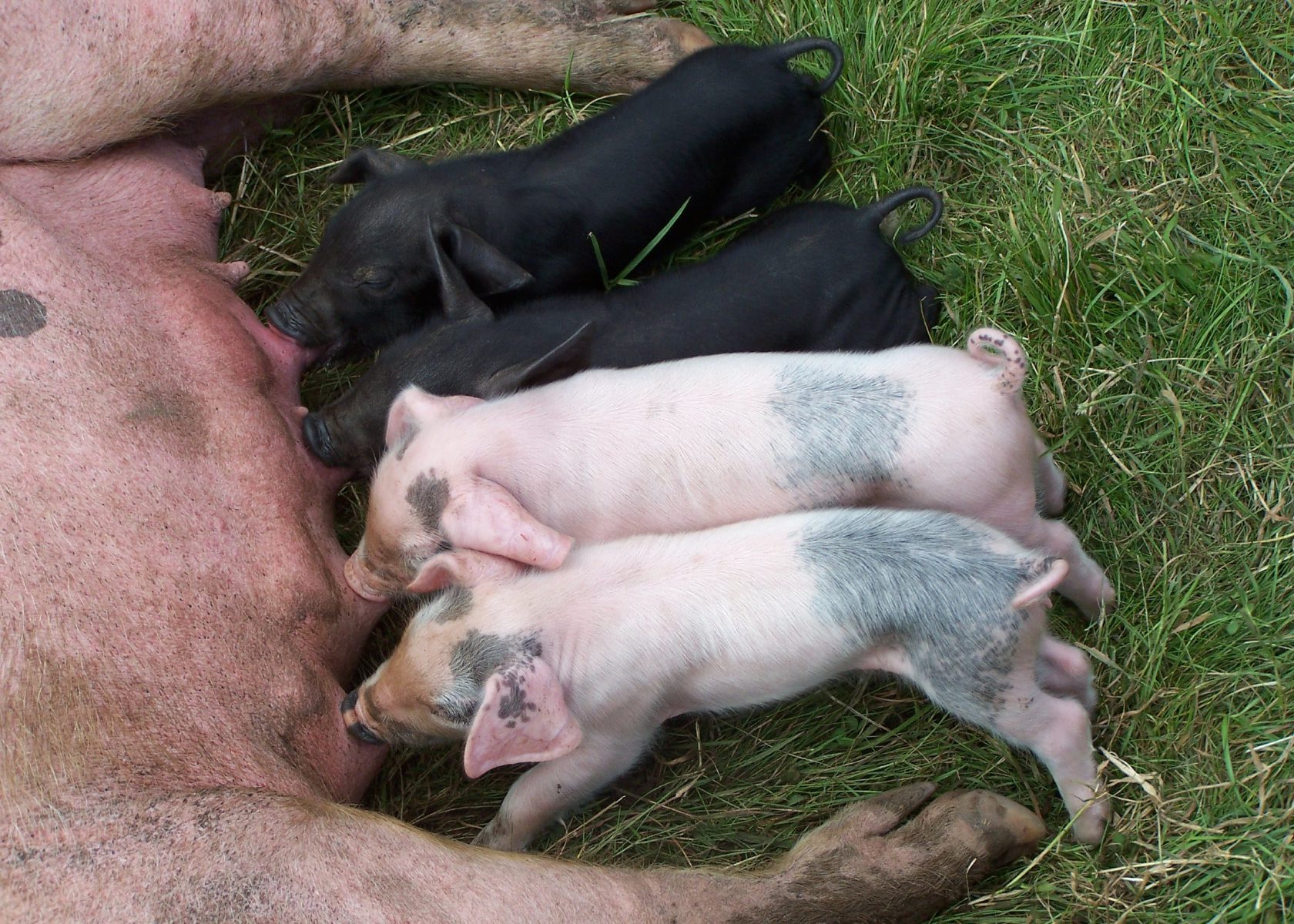When you sit down to eat, do you know if your chop was chipper, your sausage sanguine or your ham happy? If you care about where your meat comes from and how it was raised, perhaps it is time to rear some pigs for pork. It’s easier than you might think and the results are out of this world.
Apologies for beginning on an administrative note but it must be mentioned that pigs have to be registered with D.E.F.R.A. by law. Don’t be put off though. A simple phone call to the Rural Payments Agency requesting a holding number will get you started and from there the staff should be able to advise you. Another issue to address before rushing out and buying your porkers is where they are going to live. Pigs enjoy rooting outdoors, so an enclosure in the corner of a large garden is ideal. Be warned though – pigs excavate the ground with extraordinary efficiency although this can be useful if you have a patch of weeds to clear! Electric stock netting makes for the simplest pen but good quality stock fencing with two strands of barbed wire around the base does a more permanent job. As well as room to range, pigs require shelter in the form of a purpose-built pig ark or something similar, which should be regularly mucked out and bedded down with straw.
Now for the exciting part – buying your pigs! The easiest and cheapest way of acquiring stock is in the form of weaners, young pigs which are no longer dependent on a sow. Adverts appear regularly in the classified publications. Be discerning and always ask sellers for information, as reputable breeders are always happy to talk and offer advice. Which breed is the next quandary and there are a bewildering number to choose from, but in simple terms they fall into two camps, modern and traditional. The modern varieties such as Landrace and Large White have been developed for the commercial market. They convert food to meat efficiently and give lean carcasses with plenty of meat, however they tend to be less hardy and produce slightly bland pork. Traditional breeds, such as Saddleback and Large Black grow slowly and have a tendency to put on lots of fat, but are easy to care for and provide fantastic tasting meat. Crosses between traditional and modern breeds are also worth considering as they can combine some of the better features from both types of pig. Weaners of both sexes can be bought and kept together, as they should be in the freezer before reaching sexual maturity, but if in any doubt buy females!
Before your weaners arrive food must be organised and fresh water laid on in their enclosure. The simplest way to feed young pigs is with a complete ‘growers’ ration bought from any animal feed supplier. Such feeds provide everything the weaners require and give feeding advice on the bag – you can even buy organic if you like. In addition to their pellets pigs adore waste from the kitchen and garden, scoffing with glee vegetable peelings, old fruit etc., but be warned, feeding them animal products is illegal! Once the weaners arrive you will quickly appreciate what enchanting creatures they are and hours of your life will be whiled away gazing at them eating and snuffling around. Try to remember though, that pigs kept for pork are not pets and that sooner or later little ‘Stripy Nose’ or ‘Spotty’ pig will be Sunday lunch! Porkers kept on a small scale are not prone to many ailments, but will suffer in hot weather when shade and a mud wallow should be made available. If any of your stock does become unwell consult a vet immediately.
Three months after your weaners arrived they should have attained a weight of roughly 50 kg and be ready for slaughter. At this stage pigs are described as being of ‘pork weight’ but if you are interested in home curing, keep the animals longer to attain ‘bacon weight’, something around 75 kg. When it comes to despatching your pigs, a trip to the abattoir is usually the best option. Having booked in, pigs can be dropped off live and picked up a couple of days later butchered and bagged up. If you want to go the ‘whole hog’ however and use ‘everything but the squeal’ in the traditional manner, home slaughter is the only option. Killing at home is perfectly legal providing the meat is used for family consumption, but under no circumstances should it be attempted without training or supervision from a professional.
Once your meat is safely stowed in the freezer and the first cherished joint taken out for cooking you will discover that home-reared pork is the best you’ve ever tasted. Not only is the quality outstanding, but that piece of meat, crowned with golden crackling, is seasoned with secret ingredients… satisfaction and pride.
- words: Michael White
You may also like
Go with the Flow
Sue Whigham shares some valuable new-to-gardening advice I’m sure that by now we should be used to the rain but I’m not entirely sure that we are. We had a dry, sunny day the other day and how everybody’s mood...
Farm Fables
Jane Howard gets to the bottom of why so many ponds have disappeared across the High Weald I have a new passion, almost an obsession, it’s about ponds. And there’s a distinct possibility I might become a bit of a...
Hedge Issues
Sue Whigham takes a meander along nature’s verdant and vital corridors Recently the BBC’s Today programme carried a feature about England’s hedgerows which created a lot of interest among listeners. On the strength of that, Martha Kearney interviewed one of...















